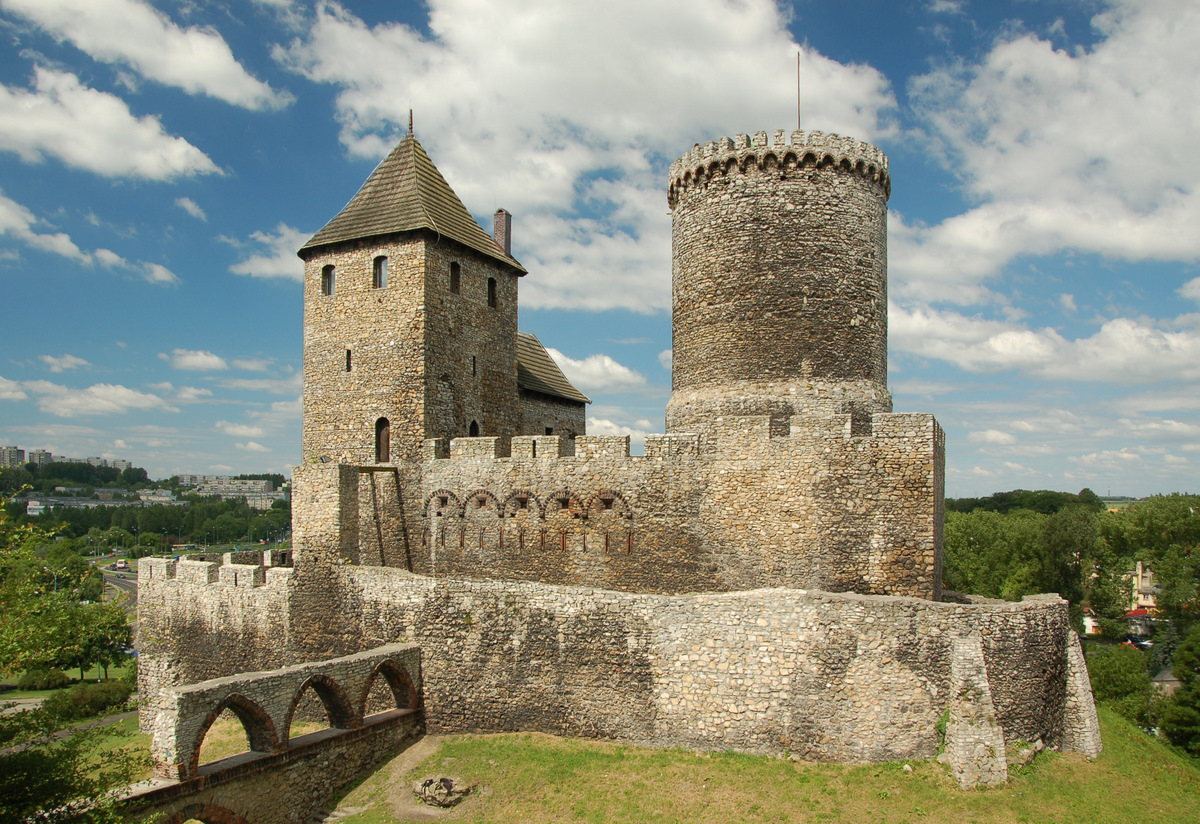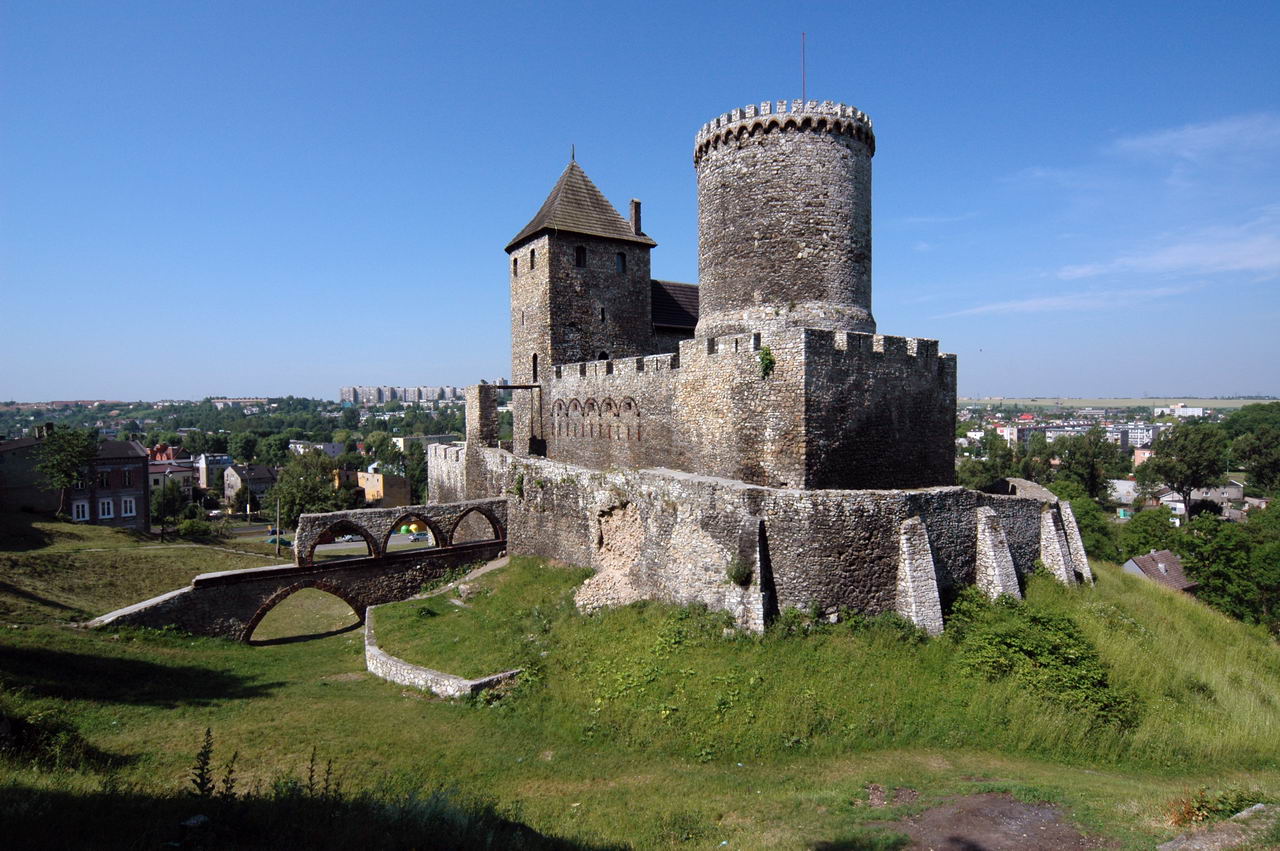Będzin
Będzin [ bɛɲʥin ] ( German Bendzin, 1939-45 Bendsburg ) is a city on the Black Przemsa in Poland in the Silesian Voivodeship.
- 6.1 Literature
- 6.2 External links
- 6.3 footnotes
Geography
Geographical Location
Będzin is located about 65 km north- west of Krakow, 10 km north-east of Katowice in the northeastern part of the Upper Silesian industrial district.
Boroughs
The urban area of Będzin consists of the following districts:
- Śródmieście; downtown Będzin
- Małobądz; District since 1915
- Gzichów; since 1915
- Warpie
- Ksawera; since 1923
- Łagisza; since 1973
- Grodziec; since 1975
History
First there were settlements on the site of today's bendin in the 9th century. At that time a castle was built on a hill, in whose protection a settlement developed. The town, including the castle was destroyed by the Tatars in 1241 (possibly until 1259 ). At the latest in 1349 the city received city rights by Polish law. On August 5, 1358, the city of King Casimir III received. the Great the city right after the Magdeburg law. In the same year the construction of a stone castle began.
As a result of the Third Partition of Poland was bendin part of Prussia, the castle and the estates of the city were the property of Hohenzollern. 1807 the town is part of the Duchy of Warsaw and in 1815 by the terms of the Congress of Vienna city in the Kingdom of Poland, whose king was the Czar of Russia respective.
Late 18th century or early 19th century was discovered in the area around Będzin coal. Thus, the image of the town changed and was now dominated by mining. The train Warsaw - Vienna awarded the town in 1859 connection to the rail network. There are two stops, bendin and Novy - bendin. Around 1860 the first public school was opened. Seven years later, the powiat Będziński and bendin was became a district town.
On September 4, 1939 Będzin was occupied by the German Wehrmacht and incorporated into the German Reich. It became the seat of a German district administrator and renamed in Bendsburg little later.
The city had at that time one of the largest Jewish communities in Poland with Klein (1940 ) 24 495 members. On September 8, 1939 many Jewish residents of the town were driven by a SS / SD Einsatzgruppe in the Great City Synagogue, which was then put them on fire. Here, more than 40 people died. From July to August 1943, the ghetto was cleared by the German occupiers and the Jewish inhabitants were deported to the concentration camp Auschwitz -Birkenau. There the inhabitants Będzins as Rózia Robota, Ala Gertner, Regina Safirsztajn, esters Wajcblum and at least seven other men were later known by name involved in the preparation and implementation of the revolt of the Sonderkommando against the SS guards.
1956, the reconstruction of the destroyed castle was completed.
Będzin was historically the territory of Lesser Poland, after the administrative reform in modern Poland in 1999 it became part of WojewĂłdztwo śląskie ( Silesian Voivodeship ). To distinguish small Polish areas of the Upper Silesian industrial region of Silesia, the area around Będzin is sometimes referred to as Zagłębie Dąbrowskie.
Traffic
The public transport is a connection to the network of the Upper Silesian tram.
Sons and daughters of the town
- Grzegorz Dolniak (1960-2010), Polish politician and victims of the plane crash near Smolensk
- Ala Gertner (1912-1945), deaths at Auschwitz
- Arno Lustiger (1924-2012), German historian
- Hermann Nunberg (1884-1970), a Polish psychiatrist, psychoanalyst and student of Sigmund Freud, who worked from 1914 in Vienna and 1933 emigrated to the United States
- Sam Pivnik ( born 1926 ), a Holocaust survivor and witness
- Stanisław Wygodzki (1907-1922), Polish- Jewish writer
Freeman
- Janusz Gajos
- Ala Gertner
- Rutka Laskier
- Arno Lustiger
- Jean- Marie Lustiger
- Adam Śmigielski
- Stanisław Wygodzki








